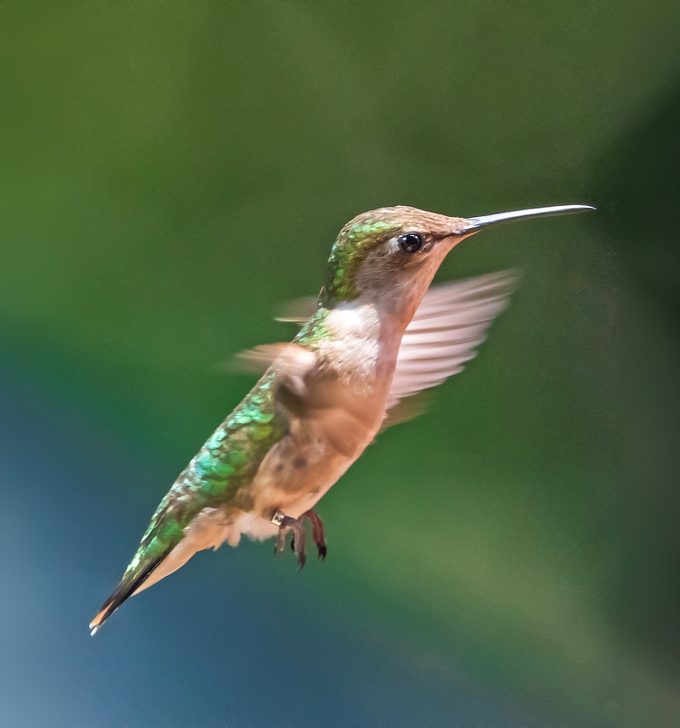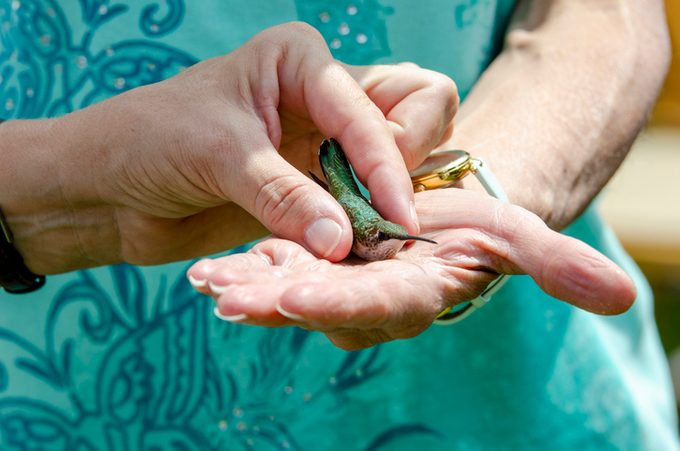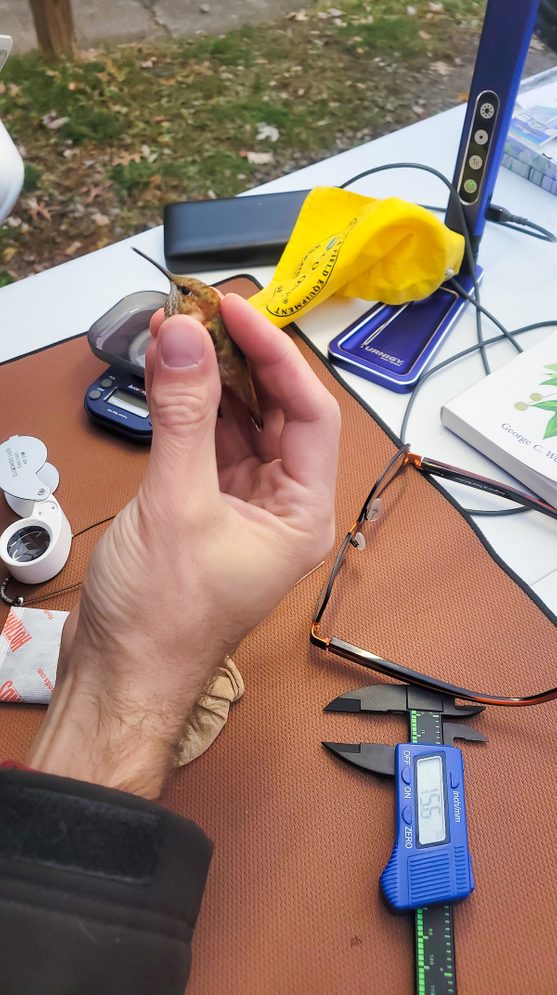Small, numbered rings reveal the secrets of hummingbird migration! Learn all about the importance and process of hummingbird banding.

Hummingbird Banding: Tracking Tiny Travelers

One of the best tools for hummingbird tracking is through banding, which involves placing a numbered metal ring on a bird’s leg and then releasing it. When that individual is captured or found again, the unique number on the band identifies it. Here’s what to know about the fascinating world of hummingbird banding, and why it’s a good idea to track these tiny gems.
On This Page
Hummingbird Banding Is a Specialized Process

All such research in the U.S. requires special permits from the federal Bird Banding Lab, but anyone who handles hummingbirds must go through extra steps. According to Ryan Jacob, banding projects director for the Black Swamp Bird Observatory, “Special training is required in the methods of hummingbird handling, banding and band making.”
Band making? That’s right: While the bands for other birds arrive already formed and ready to use, Ryan says, “hummingbird banders receive a thin metal sheet of 100 bands that must be cut into strips, with each individual band then cut from that strip to a specific length. The edges of the band must be sanded smooth and then each band is formed into a perfect circle. Hummingbird banding is equal parts band preparation and actual banding!”
To catch these tiny gems, some banders use lightweight mist nets that stop the birds and hold them in a gentle web. Others set up a wire cage around hummingbird feeders, with a door that can be closed when a bird visits. As soon as a bird is captured, it is removed and processed quickly.
“Data collected includes age and sex; wing, tail and bill length; weight; and the amount of gorget feathers,” Ryan says. Then the bird is fitted with a precisely sized, minuscule band, and it buzzes away.
Bands Allow Researchers to Track Hummingbird Travels

Hummingbird banding has given us unique insights into the lives of these feathered jewels. For example, we now know that although their average lifespan is short, some individuals live seven years or more. One female broad-tailed hummingbird was more than 12 years old when recaptured.
Banding has also revealed amazing things about the journeys of these birds. For example, migrating ruby-throated hummingbirds usually remain in stopover sites for less than a day. Sometimes, however, they’ll stay for up to two weeks, especially along the Gulf Coast.
In Louisiana, where many typically western species spend the winter, a banded rufous hummingbird returned to the same yard for eight winters in a row. A black-chinned hummingbird banded in Louisiana one winter was captured in Idaho the following summer. Another black-chinned, banded in Louisiana, was recaptured later in Arizona, then found again the next winter in Louisiana.
Clearly these birds may survive for a long time when they stray outside their normal ranges, but without banding, we would never know that.
Look for Banded Hummingbirds in Your Yard
While the actual banding of these small creatures occurs at only a few places, the banded birds may show up anywhere. Ryan encourages backyard birders to pay attention. “Look closely at the legs of hummingbirds visiting your feeder,” he says. “You may just find a little silver band teeming with information!”
Banders Identify the Hummingbird Species

Rufous and Allen’s are two western hummingbirds that often wander east. But females and the young of these two species are almost impossible to separate—unless you can examine them in the hand and measure certain tail feathers. When a bird of this pair shows up at an eastern feeder, banders often need to determine which species is present. This happened in Amanda Jackson’s Columbia, Missouri, backyard.
When a rufous showed up at her feeder in October 2022, she called her local Audubon chapter. “Before I knew it, I had birders from all over the state coming to see their ‘lifer,’ ” she says. “Two banders came and successfully banded my rufous.”
The bird became part of their family, Amanda says. “I frantically changed the feeders multiple times a day because it started to freeze,” she says. The bird eventually moved on in late November.
About the Expert
Ryan Jacob manages Black Swamp Bird Observatory’s Navarre Marsh banding research station. He works with a team of volunteers and seasonal staff to operate the observatory’s mist netting efforts during spring and fall migration. He is a North American Banding Council certified trainer.
RELATED:





















